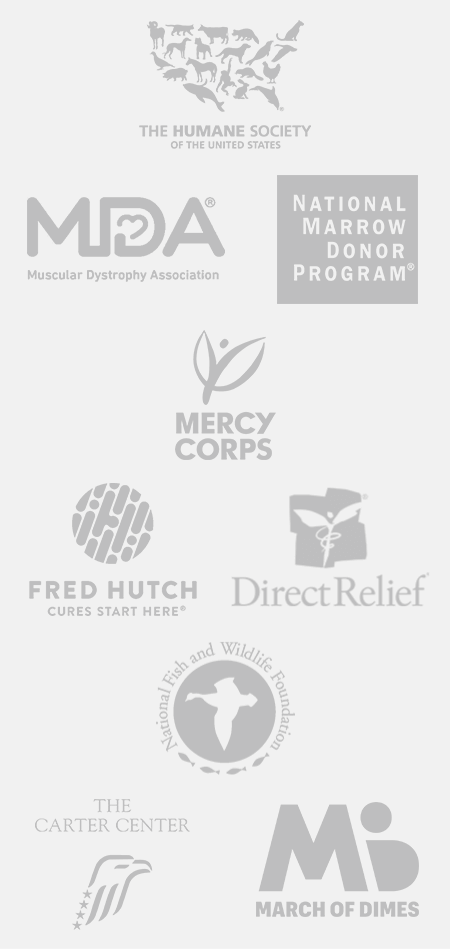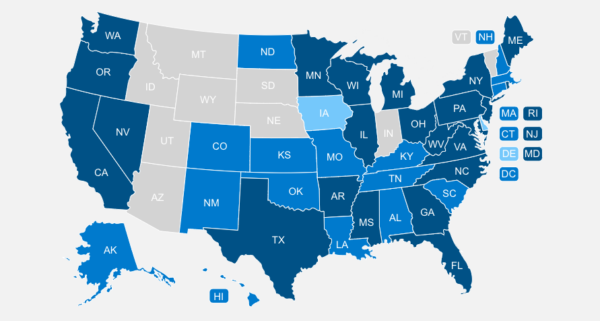
California Attorney General Increases Charity Registration Fees and Updates Registration Forms for 2022
December 30, 2021
California Secretary of State Temporarily Suspends Filing Operations to Transition Online Systems
March 12, 2022Retain More Donors in 2022: How to Get Started Now

1. Use technology to predict 2022 churn risks in advance.
Start by using technology to prevent donor churn right at the source—predict in advance when donors will lapse out of your giving program. Artificial intelligence is already being used by nonprofits for just this purpose. These tools screen your database of historical donor interactions to identify deep engagement trends. From there, AI trains and continually updates an algorithm to accurately predict when individual donors are likely to stop giving to your nonprofit in the near future. And the year-end season is the perfect time to start paying closer attention to your donor engagement data. Giving Tuesday and year-end fundraising campaigns often generate huge increases in donor interactions and valuable data that can fuel your predictions. Explore the Dataro guide to AI for nonprofits to learn more about how artificial intelligence uses data to measure donor propensities. With a handy list of at-risk donors in hand, you can use it to guide your retention strategy immediately at the top of the new year.2. Develop a targeted retention outreach cadence.
Once you know which donors are likely to churn from your giving program, you can start reaching out to them. Create an outreach cadence to work through in the first months of 2022. We recommend calling donors to express your gratitude for their past support, explain how your organization has kept pushing forward through challenges, and offer new opportunities and events for them to join. Just don’t ask for another donation! The goal is to put your mission back on their minds and remind them why their help matters. As you work through your list of at-risk donors, carefully track who you’ve spoken with and when in your database or CRM platform. This will make it easier to manage future communications and know when enough time has passed before sending a new fundraising appeal. Handling your outreach in a targeted way like this can boost the long-term ROI of your efforts. Reaching out to your most at-risk donors helps minimize the time and labor needed from your team—and the efficiency will surely be appreciated after the busy year-end season has wrapped up.3. Target your next appeals in smarter ways.
Moving ahead, you can keep using AI technology to refine how you target new fundraising appeals in the coming year. This process goes beyond traditional donor segmentation strategies, giving you an added level of accuracy to keep your mission on supporters’ minds year-round. Here are a few examples:- Identify donors likely to join your giving program. On the flipside of predicting churn, AI can also show you who’s the most likely to join your program. Quickly find and reach out to these donors, explain the program, and ask them to join.
- Create mailing lists for direct mail appeals. AI can identify the donors most likely to give to a mail appeal, meaning you can cut on printing costs while generating more donation revenue. This is especially helpful for boosting ROI when sending high-quality mailers to your larger donors.
- Cultivate mid-level donors. Many organizations focus so heavily on cultivating their major donors that this crucial mid-level group gets neglected. AI can find your donors likely to give a mid-size gift in the coming year, making it easy to add them to a special stewardship cadence for personalized outreach and invitations in 2022 and beyond.
4. Use your New Year essentials to instill greater donor confidence.
Finally, as you adopt new tools and strategies, take the opportunity to use your organization’s logistical and compliance essentials to help support your donor relationships. When you tackle tasks that must get done to keep your organization compliant and operational in the coming year, think about how they might be used to show your donors how seriously you take your role as a steward of their support. For instance, renew your solicitation registrations and update disclosures as needed to ensure you can still operate smoothly. Use your annual report to tell the story of how far you’ve come, how much further you need to go, and to recognize everyone who’s helped. Even small steps can be meaningful to donors and remind them of the importance of your work. We also recommend auditing your tech stack and data strategies to catch gaps that could be addressed in the coming year. This is especially important if you choose to implement AI technology since it relies on a steady stream of engagement data to generate predictions.Donor retention is a constant challenge for nonprofits. Understanding why donors stop giving can be complicated, and trying to figure it out on your own can be more time-consuming than useful. This is why technology can and should help. By cutting down on the effort needed to retain donors, you can put more of your time towards building relationships, planning new campaigns, and furthering your mission. Best of luck in 2022! This post was written by Chris Paver of Dataro. Chris is the COO of Dataro, joining the team as a business partner in 2018. Chris has a wealth of experience from the world of commercial law, where he specialized in advising technology, media, and high-growth businesses across the full spectrum of strategic, commercial, and regulatory issues. As COO, Chris has helped drive Dataro’s rapid growth in the nonprofit sector.
Trust the #1 Choice
for State Charitable Registration
More nonprofits choose Labyrinth
than any other service provider
Contact Us Today
Want To Learn More?
Join Our Monthly Webinar
Charitable Registration: How Can I Be Compliant?
Read Our Whitepaper
Charitable Registration: Navigating The Complexities
We proudly provide
compliance services for:





